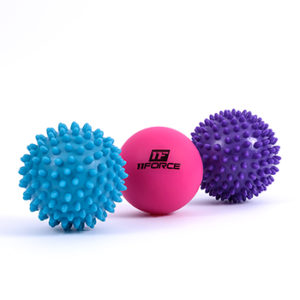It’s not just professional athletes who experience tightness, cramping and general kinks in their body after a workout, however hiring a personal masseuse to help us just isn’t financially viable for everyone. Fortunately foam rollers provide us with an affordable way to self massage in order to loosen tight muscles, with the added benefit of being able to control the amount of pressure being applied and to which areas. Foam rolling not only provides a means of releasing tension from muscles, but they are also used as an effective form of myofascial release.
So what is ‘myofascial release’?
Fascia is a continuous system of fibrous tissue that encloses the whole body, much like a three dimensional spider’s web. Imagine it starting just below the skin layer and reaching all the way down to the bone and across in all directions. It has three layers: Superficial fascia, deep fascia and deepest fascia, which together reach and interpenetrates every muscle, bone, organ, vein, artery and nerve. When fascia is in it’s normal state it is relaxed and supple, like loosely threaded fingers or the loose knitting on a woollen jumper. When it becomes restricted, due to injury or overuse, it is rigid and less pliable, which creates tension, restricted movement, discomfort and pain. Myofascial release, or foam rolling, is a safe technique that is designed to relieve skeletal muscle pain and immobility by applying trigger point pressure to the specific parts of the body that have been affected. It is effective for increasing function, flexibility and reducing pain in virtually any area containing soft tissue. Myofascial release therapy has also been used to treat other conditions including temporomandibular joint disorder, carpal tunnel syndrome and even migraine headaches and fibromyalgia. The myofascial release technique works to improve blood and lymphatic circulation in the muscles and has the potential for increasing performance, making it not only an effective tool for assisting in recovery from an injury, but also a useful way of preventing injury occurring by keeping the muscles supple and enhancing muscles performance.
What causes myofascial pain?
There are many reasons trigger points and myofascial pain develop, some of these include injury, training, bad posture, specific movement patterns, even nutrition, hydration and rest. Sore, tired and tense muscles can be caused from lack of warm up, warm down, overuse or working on muscles that have been neglected for a period of time.
Join us on FACEBOOK and INSTAGRAM
www.facebook.com/11ForceSports
www.instagram.com/11ForceSports


